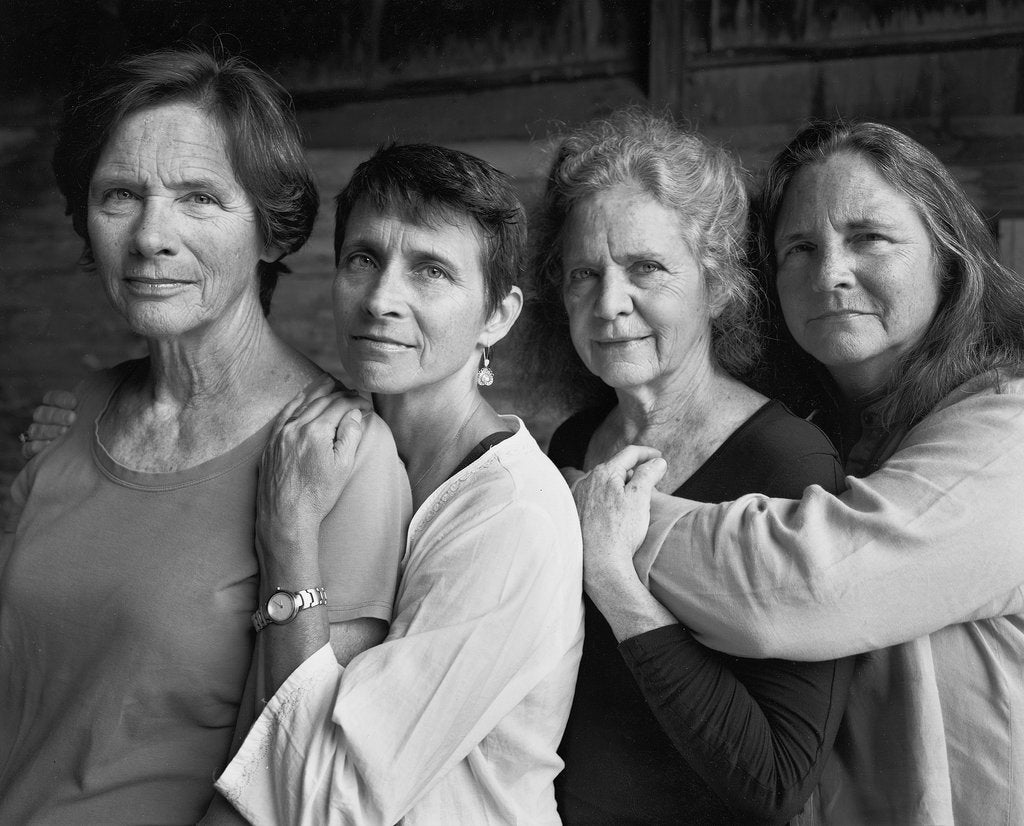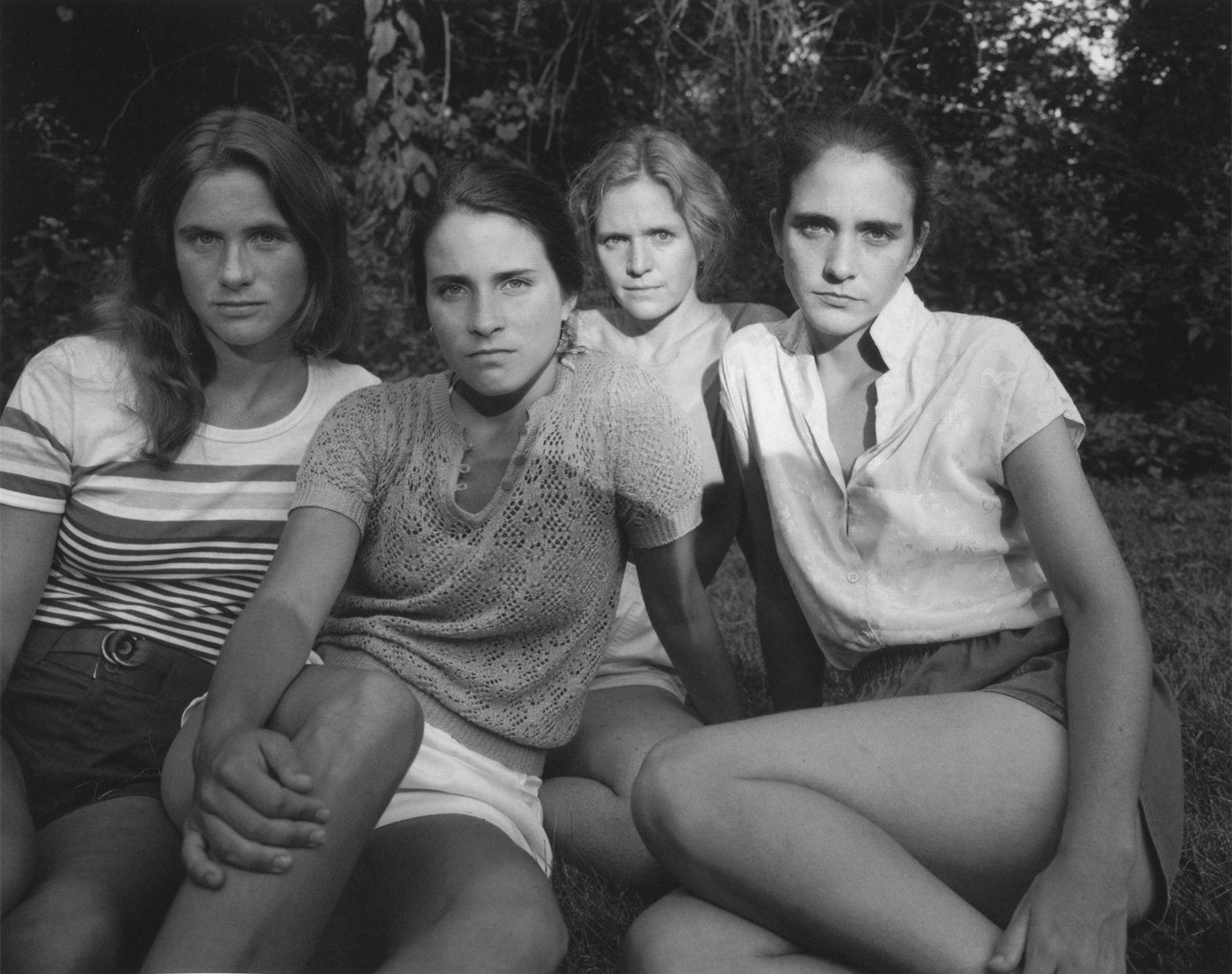When I first saw some pictures from Nicholas Nixon’s “The Brown Sisters” – probably almost 20 years ago – I dismissed the collective as a gimmick. I thought just about anyone could come up with that idea, and I’m even more confident today that many many people have photographed the same set of friends or relatives, arranged in the same way, on a regular basis. If the “In Almost Every Picture” books have taught us anything (otherwise debatable), it is that, or something extrapolably close.
But boy did I ever get “The Brown Sisters” wrong. All wrong. This realization didn’t happen all of the sudden. The Museum of Modern Art has seemed to exhibit a few or a lot of the photographs with some regularity; they had grown on me with each viewing. But it was just a few months ago when the deal was sealed by the MoMA show1 and book2 of the entire 40-year set.
I had never objected to the quality of the picture-making, or certainly of the prints, so I started to wonder why my opinion has changed so drastically. It pretty simply comes down to the devastatingly obvious: 1) the Brown sisters are getting older, and 2) so am I.
There are many wonderful and memorable pictures from the first 20-odd years of the project, which began in 1975, but the earliest one that totally slays me is 1999. It’s the first one in which Bebe, the eldest and Nixon’s wife, looks to be experiencing the weight of age. Don’t get me wrong: she’s a beautiful person and she doesn’t look “old,” but there’s something weary in her eyes that wasn’t there before (and wouldn’t always be again in subsequent photographs) that counteracts her slight smile. The youngest, Mimi, seems to sense her sister’s mood, and offers her gravest look to date.
And check out 2004, the first year in which we can say that none of the women are young anymore. There’s a wonderful detail here – both Bebe and Mimi, who are next to each other, are sleeveless – which I understand only from my mother, who refuses to show upper arm in public and who praises the firmness of Michelle Obama’s triceps. The ten years between Bebe and Mimi are manifestly clear, in both face and arm.
As the series progresses, the sisters seem ever more physically intimate. They were never really stand-offish, although in three of the five pictures from the ‘70s, Laurie favors a crossed-arms stance that defies the dictates of “receptive” body language. By the time we get to 2012, they’re just about hanging on to each other for dear life. It’s a remarkable picture.
Now of course none of these pictures existed when I first saw “The Brown Sisters.” I was in my mid-to-late 20s, and now I’m in my mid-to-late 40s. I didn’t have wrinkles or grey hairs then, and now I do. I’ve come to realize that there’s wisdom in the work that I didn’t at first understand, and that perhaps that wisdom was really only nascent in the photographs back in 1995 or so.

This is quite a unique thing in visual arts, I think: a work can surely “age” as we do – as we constantly bring new personal insights and experiences to its viewing, and as the world itself changes – but for it to “grow” along with us as well? This might happen in a way with long-running television shows, and I have certainly felt something similar as my favorite musicians release albums over the span of many years; the newest songs casting earlier ones in a new light, often modifying, amplifying, or even contradicting the previous work. But the effect of “The Brown Sisters” seems to be singular among the work of major photographers.
And back to the aging: so yeah, the world is spinning faster than it did when I was young, but that’s not the half of it. Not nearly. I now have a father who’s 70 and a mother not far behind. I’m quite confident that they’ll be around another 20 years, but there’s no denying that some day they won’t be there. And it’s a funny thing, because this is obviously no groundbreaking insight (probably most every piece of literature that I love is somehow about loss), but still we each must on our own come to understand it. It’s somehow an eternally fresh surprise.
Ultimately, what I think that Nicholas Nixon has been doing is to prepare himself, and his wife and children and sisters-in-law, for loss. And the rest us, of course. Because some day, there will only be three Brown sisters. Some day, there will be a gap in the picture. And then more gaps. I find that almost unbearably hard to consider, and yet I’m entirely grateful that the photographs take me there.
1. It was somewhat inexplicably installed in the lobby. At first, I liked the democracy of letting people see it for free. But really, it’s hung too close to the big couches where exhausted tourists lie half passed out.
2. It’s probably better experienced as a book, anyway, where you can go in order or skip around a lot. It’s beautifully printed at a nice size – qualities which easily outweigh the moderate cheesiness of the bright linen cover with its tipped-on photograph.

